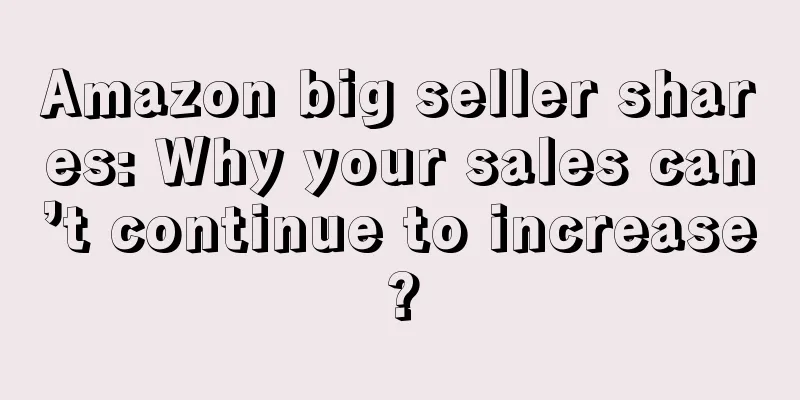Do you have this feeling: you work really hard every day, spend time selecting products, put them into FBA, increase costs to attract traffic, optimize each product carefully, and participate in many activities, but your performance just doesn’t grow, and this situation continues for several months. What should you do?
If you encounter the above situation, it means that your store is currently in an operational bottleneck period. In other words, you don’t know what to do at each stage.
In the early stages of your account, you must focus on placing orders, find ways to optimize your Amazon listings, and place orders through advertising. But in the later stage, it is all about maintaining the listing. For different accounts, the methods of maintaining listings will be different. Here I call them: building an empire and defending an empire.
•Build a business and operate a small account
• Guard the territory and operate large accounts
Based on experience, we can distinguish between large accounts and small accounts:
◾Large accounts: A single SKU has more than 20 orders per day, and the account has more than 100 orders per day. This mainly targets accounts under the boutique operation model, and the distribution model will not be described in detail.
◾Small account: less than 10 orders for a single SKU, and the average daily sales volume of the account is less than 50.
Figure out what needs to be focused on in these two stages. In this case, if you want to continue to increase sales, you must make operations "detailed". The differences between operating large accounts and small accounts are mainly reflected in the following aspects:
1. Stocking FBA Inventory
◦Big accounts: We can’t run out of stock! We can’t run out of stock! We can’t run out of stock! This is absolutely not allowed. If a single SKU has 100 orders a day, if it is out of stock, the number will become around 20 orders. Because once the product is out of stock, your sales ranking will drop a lot, and your traffic will almost disappear, and of course there will be no orders.
◦ Small accounts: Usually there are only two or three orders. It is allowed to replenish the stock after it is out of stock. It is not difficult to continue to maintain sales of two or three orders a day.
PS: Although the listing of small accounts will not be greatly affected when they are out of stock, you should try to avoid such a situation. At the same time, we should also pay attention to product quality complaints. The impact of listing removal is equivalent to out of stock.
2. Listing Optimization
◦ Large accounts: Listings cannot be changed at will. We once had a series of products that sold very well, with daily sales of 300 yuan, which was already BS. As a result, a new colleague took over and changed the listing from top to bottom. Now we are not in the top 100. A year has passed, and the loss has not been made up yet.
◦ Small accounts: Just keep optimizing your listings (of course, don’t make random changes), and the impact will not be significant.
PS: Seeing this, many people have questions: Why will a large account have no traffic if a large number of modifications are made? Because the Amazon platform thinks you have replaced the product with a new one. The Amazon system will crawl and index all the listings on the site every once in a while. If one of your products gets BS, and you want to switch to a completely new product, change the listing keywords, add new pictures, new descriptions, etc., the Amazon platform will determine that your listing has been replaced with another product, so it will not give you more traffic, and this listing is basically dead.
3. Advertising Optimization
◦ Large accounts: If your ASIN is already ranked high, you will get more traffic, including irrelevant traffic (for example, customers click on it just because they are curious about what your product is and why it has so many reviews). However, it is easy to lose money by advertising this ASIN because of the high exposure and clicks, so it must be optimized, and optimization techniques are very important.
◦ Small accounts: Basically, no optimization is needed. Just lower the bid and you will not lose much money.
4. Review Processing
◦Big accounts: have less impact on reviews. As long as there are no negative reviews on the homepage of the details page and the overall rating is higher than 4 stars, it is OK. Of course, it is best to be above 4.3, so that the conversion rate is better.
◦ Small accounts: They rely heavily on reviews, especially negative reviews, so they need special attention.
If you are an administrator, you should manage these different accounts with a focus. Remember not to let newcomers manage large accounts (even if they are experienced, they are newcomers to your company).
If you are an operator, you need to know what account you are in order to know where the focus is. If you are operating a large account, remember to consult with managers when making decisions. It is very easy to get into trouble if you handle things in a self-righteous manner.
Of course, there are many small details to pay attention to when operating any account. Here we only list the final part, and I hope it will be helpful to everyone.

